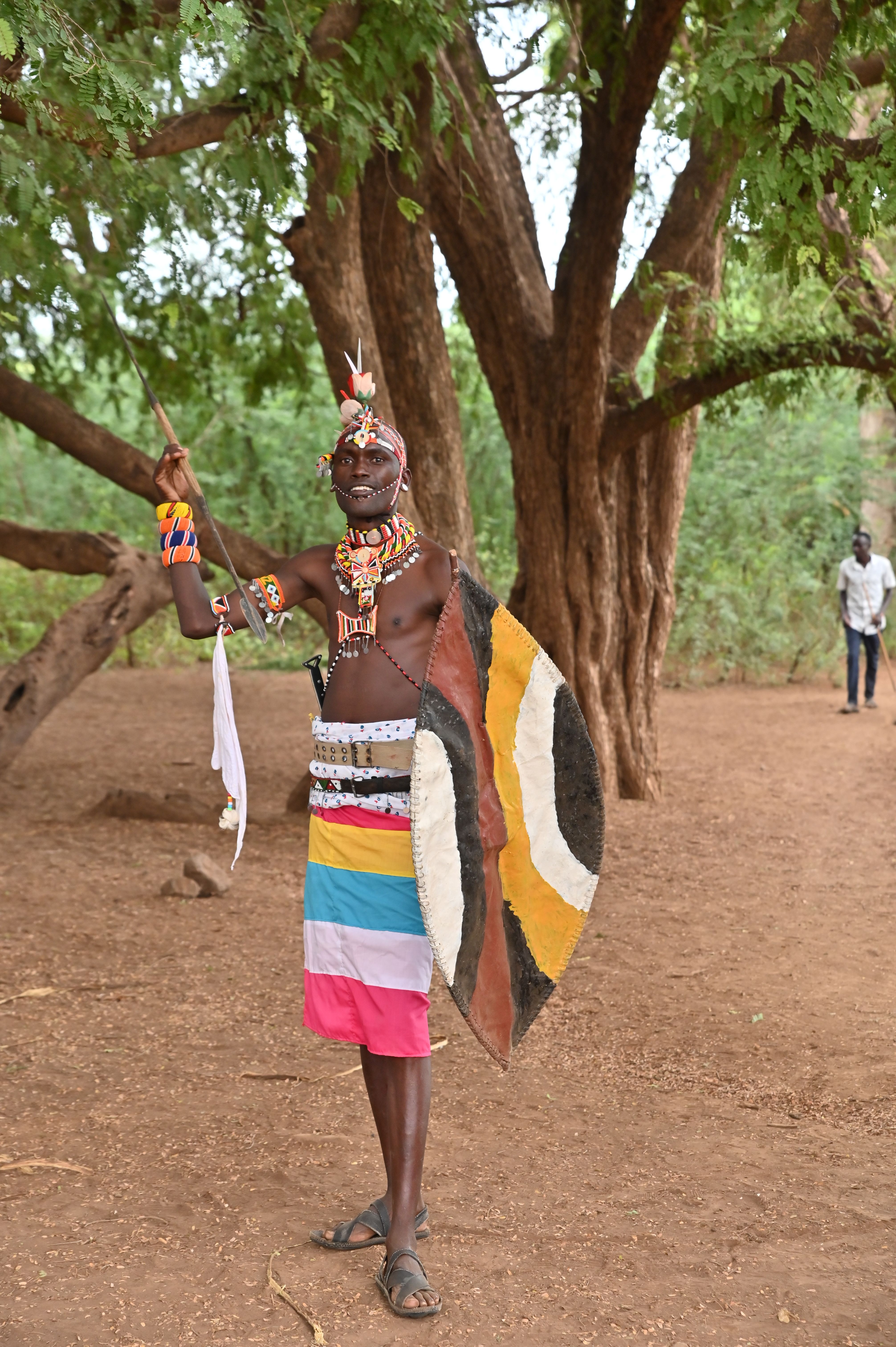Touring exhibition connects Ilchamus with their ancestors

Lonoo Rengemoi Lekuracha pointing at a picture of himself from 1977 taken by Matthew Spriggs | Credit: Patrick Nakure & Nik Petek-Sargeant
Lonoo Rengemoi Lekuracha pointing at a picture of himself from 1977 taken by Matthew Spriggs | Credit: Patrick Nakure & Nik Petek-Sargeant
Recent decades have brought immense changes to Kenya and almost no other area has changed as much as the Baringo region. Lake Baringo has flooded twice in the past decade, displaced whole villages, and the land is being taken over by invasive plants that are making it harder to farm and herd. A common feeling encountered among Ilchamus (an agro-pastoral community inhabiting Baringo, Kenya) is a fear of loss of culture and identity in the future.
A recent co-produced touring exhibition set out to celebrate the culture, identity, and history of the Ilchamus, and ensure that Ilchamus continue to connect with their past while shaping their own future.
The exhibition was produced by Nik Petek-Sargeant in collaboration with the Namayana women’s group of Kiserian, input from elders throughout the community, and local team members Glen Nakure, Mercy Leapai Senteyon, Wilson Tiren, and Patrick Nakure.
The exhibition highlighted how the community’s knowledge and skills have persevered and changed through the ages by bringing together 200 years of objects, photographs, oral history and crafts. It included archaeological remains from Ilchamus Leabori and Ilchamus Lekeper (19th century villages central to Ilchamus history), photographs of people and, and of museum objects from between 1887 and 1970, and much more.
The Ilchamus knowledge, history and culture has been important for understanding the influence of colonialism on erosion and environment, the history of Maa people and the Loikop wars of 1840s-1870s, and revolutionising archaeological theory. But their contributions have not been recognised appropriately.
The exhibition included:
⦿ Photographs of ‘nameless’ individuals for attendees to identify and connect to descendants to strengthen historical identity links
⦿ Discussions on the future of farming considering the increasing unreliability of rains with insights from past practices
⦿ Live demonstrations of crafting linking it with 200 years of history through archaeological remains, ethnographic collections and archival footage
The exhibition particularly highlighted the histories and production of:
⦿ Ornamentation
⦿ Shields and weapons
⦿ Dress
⦿ Pottery
⦿ Leather household objects (e.g., plates, belts, bags) and how these objects help to make their ancestors’ lives more tangible
The Ilchamus that attended the exhibition were very happy to engage with the objects, and were pleased to be reconnected with images of their ancestors. People, surprised to see photos of their parents and friends, could tell personal stories about them, while great grandchildren could celebrate Lekesio who saved children during an attack on the village Ilchamus Lekeper. The burnt remains of the village, a key part of the exhibition, made the stories about the attack much more experiential and real. They also challenged some narratives and reintegrated the history held in the objects and images.
Nik Petek-Sargeant talking about archaeological finds from Ilchamus villages | Credit: Patrick Nakure & Nik Petek-Sargeant
Nik Petek-Sargeant talking about archaeological finds from Ilchamus villages | Credit: Patrick Nakure & Nik Petek-Sargeant
Selina Lekichep teaching an exhibition visitor how to bead a leather dress (lkhila) | Credit: Patrick Nakure & Nik Petek-Sargeant
Selina Lekichep teaching an exhibition visitor how to bead a leather dress (lkhila) | Credit: Patrick Nakure & Nik Petek-Sargeant
Nik Petek-Sargeant is a currently a Marie Skłodowska-Curie Actions Research Fellow who has been working with the Ilchamus community for the last 10 years on issues related to historical ecology, ethnogenesis, and crafts.
Wilson Tiren, Glen Nakure, and Mercy Leapai Senteyon and Patrick Nakure are from the Ilchamus ethnic community and have extensive knowledge about the history and environment of the Baringo region and Maa communities. They assisted NPS, other researchers, and film makers on projects exploring the archaeology, traditions, and flora and fauna of Baringo.
Namayana women’s group is actively engaging in the preservation of heritage and traditions, and provides cultural performances at events.
The touring exhibition was funded by the grant H2020-MSCA-IF-2019 project no. 884702, the British Academy Small Grant (grant no. SG2122\210789), the Cambridge Humanities Research Grant, the British Institute in Eastern Africa thematic grant, and the McDonald Impact Grant. The research was undertaken with the support from the National Museums of Kenya and under the research permit NACOSTI/P/22/17827 issued by the Government of Kenya and the National Commission for Science, Technology and Innovation.

Published 13 February 2024
The text in this work is licensed under a Creative Commons Attribution 4.0 International License






